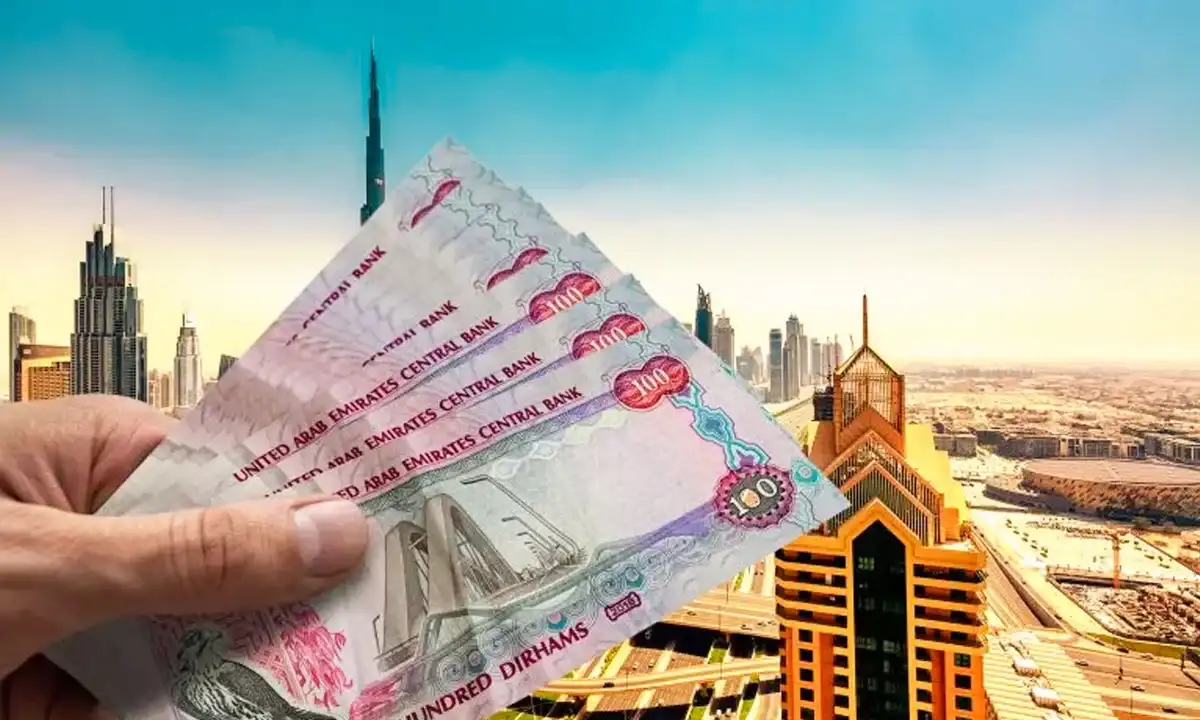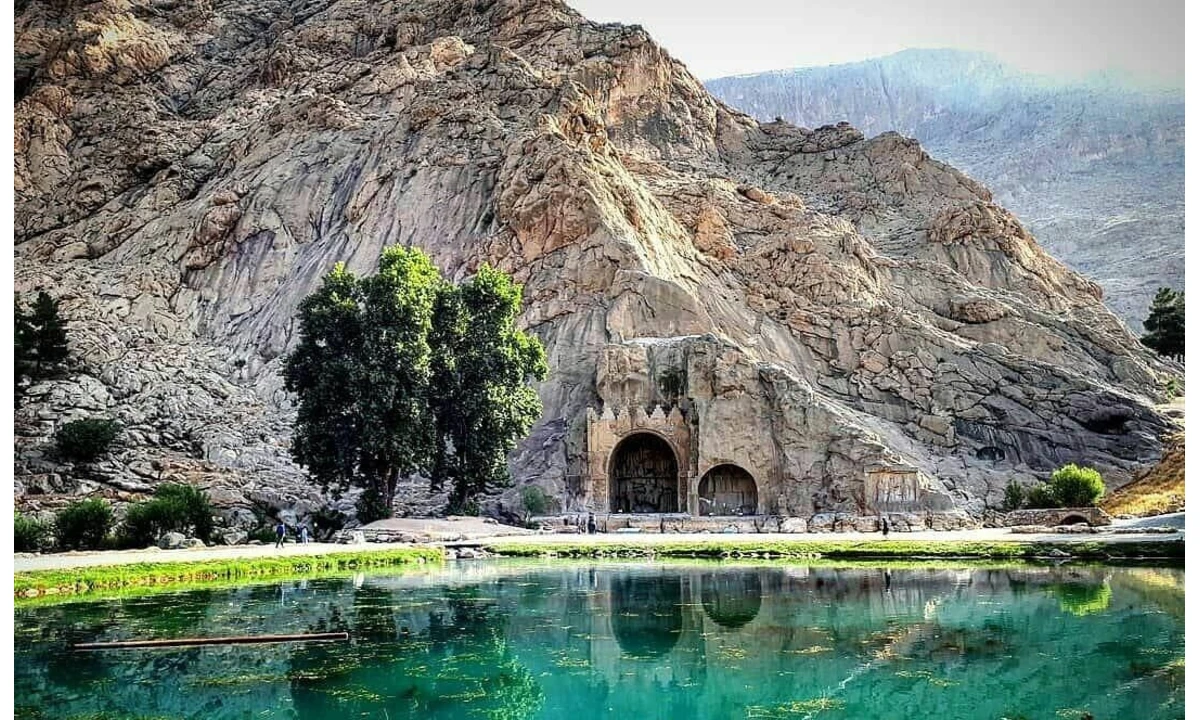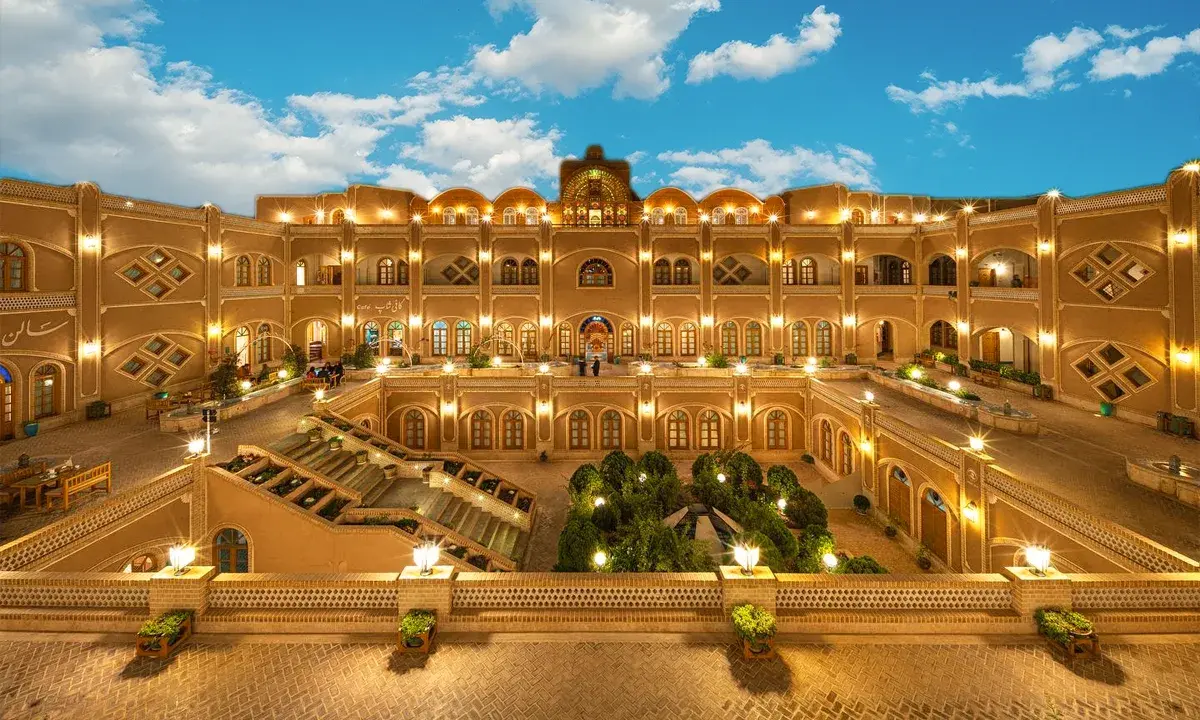Isfahan souvenirs and handicrafts; What to buy in Isfahan
![]() Author : asal | Date : Saturday 30 November 2024 16:26
Author : asal | Date : Saturday 30 November 2024 16:26

Isfahan offers a rich selection of souvenirs and handicrafts, divided into two categories: edible souvenirs and Isfahan handicrafts. The choice between them depends on your preference; edible souvenirs are cost-effective but less durable, while Isfahan handicrafts are renowned for their exquisite engraving and enamel work. Ultimately, the decision is yours, as both options allow you to share cherished memories of your trip with loved ones or create personal reminders of your journey.
Isfahan souvenirs and handicrafts are:
- Gaz
- Poolaki
- Fereydoun Shahr Honey
- Joz-e Qand
- Sohan Asali (Honey Sohan)
- Mina-Kari (Vitreous enamel)
- Qalam Kari
- Kashi Kari (Tiling)
- (Qollab Doozi) Crochet and other embroidered stitching
- Malileh Sazi
- Qalam Zani (Etching)
Edible Souvenirs of Isfahan
Edible souvenirs of Isfahan encompass a wide array of delectable treats that capture the essence of the city's culinary heritage. Isfahan is known for its superb variety of dried fruits and nuts, ranging from succulent apricots and figs to crunchy pistachios and almonds. These make for healthy and flavorful souvenirs that showcase the region's agricultural excellence.
Read More:✔️Isfahan Travel Guide | Things to Do in Isfahan
Isfahan's Delight: Gaz - A Sweet Nougat Treasure
Isfahan's Delight: Gaz - A Sweet Nougat Treasure is a title that highlights the famous Iranian confection known as "Gaz." Gaz is a traditional sweet nougat originating from the city of Isfahan in Iran. It is made from the sap of the angebin plant, a wild tamarisk tree, which is mixed with ingredients such as rosewater, pistachios, and almonds.
Gaz has a unique and delightful flavor, with a chewy yet slightly brittle texture. It is a beloved treat in Iran and is often enjoyed during special occasions and celebrations. The combination of sweet nougat with the subtle floral notes of rosewater and the nutty crunch of pistachios and almonds makes Gaz a true culinary treasure of Isfahan.
When presented in attractive packaging, Gaz becomes a popular souvenir for visitors to Isfahan, allowing them to bring a taste of this historic city back home and share the sweet flavors of Isfahan with friends and family.
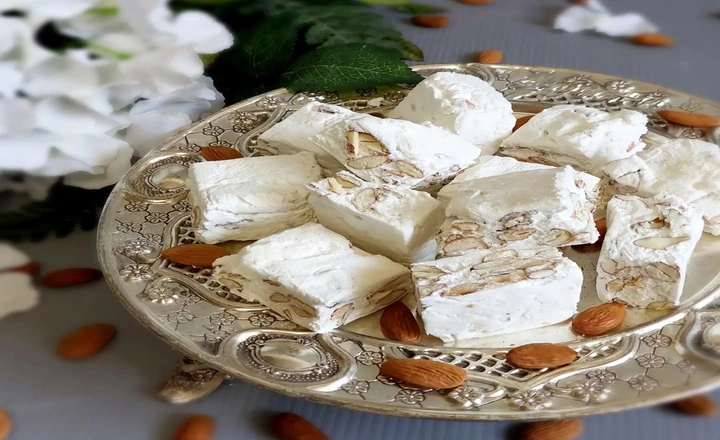
Poolaki: Iran's Irresistible Sweet Delight
Poolaki typically consists of thin strands of sugar and saffron syrup that are expertly pulled and twisted into delicate shapes, creating a unique texture that is both crispy and slightly chewy. This confection is often flavored with saffron, cardamom, and rosewater, giving it a fragrant and aromatic quality that is beloved by many.
The name "Poolaki" is derived from the Persian word "pool," which means "money," reflecting the shiny and golden appearance of this sweet when it glistens under the light. Poolaki is often enjoyed as a snack or dessert, and it is particularly popular during festive occasions, family gatherings, and celebrations.
As a sweet delight from Iran, Poolaki is not only cherished for its delicious taste but also for its cultural significance. It is frequently offered to guests as a symbol of hospitality and is considered a delightful souvenir for tourists visiting Iran. Whether enjoyed locally or shared as a gift, Poolaki represents the rich flavors and traditions of Iranian cuisine.
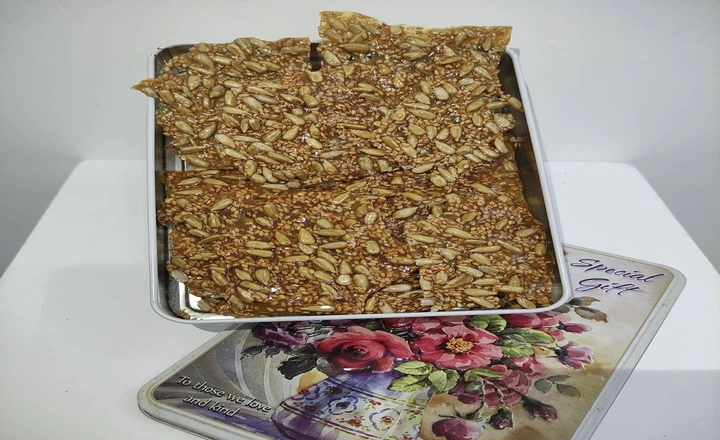
Fereydoun Shahr Honey: Nature's Golden Elixir
Fereydoun Shahr is situated in a region known for its diverse flora, which includes a variety of wildflowers and plants. The honey produced in this area benefits from the nectar of these diverse floral sources, resulting in a unique and rich flavor. The most notable characteristic of Fereydoun Shahr honey is its exquisite taste, often described as floral, aromatic, and slightly fruity.
What sets this honey apart is not only its taste but also its potential health benefits. Honey is known for its natural antioxidants, antibacterial properties, and potential soothing effects on sore throats and coughs. Fereydoun Shahr honey is no exception, and it has been used both for culinary purposes and in traditional herbal remedies in the region for generations.
The title "Nature's Golden Elixir" reflects the appreciation for Fereydoun Shahr honey as a natural and wholesome product that is not only delicious but also associated with well-being. Whether enjoyed as a sweetener, a spread, or for its potential health benefits, Fereydoun Shahr honey is a testament to the beauty of nature's offerings.
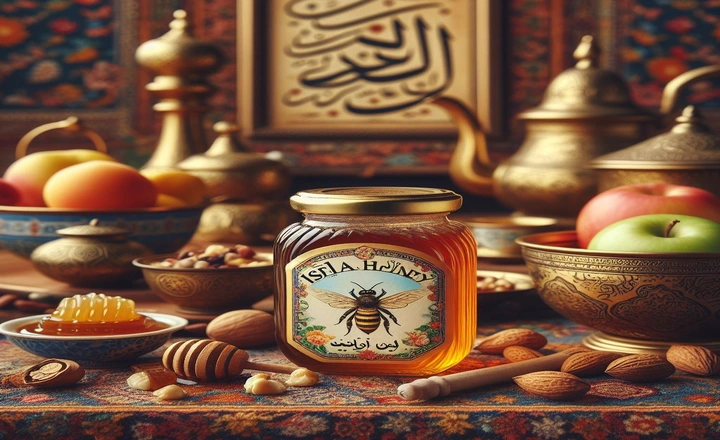
Joz-e Qand: Iran's Delightful Sugar Confection
Joz-e Qand is essentially a type of hard candy or sugar crystal, typically made from two primary ingredients: sugar and water. It is a time-honored confection that has been enjoyed in Iran for generations. To prepare Joz-e Qand, sugar and water are combined and then slowly simmered until the mixture reaches the desired consistency and color, which is usually a golden or amber hue.
Once the sugar syrup has reached the right consistency, it is poured onto a clean surface and allowed to cool and harden. Afterward, it is broken into small, irregularly shaped pieces, giving Joz-e Qand its characteristic appearance.
What sets Joz-e Qand apart is its rich sweetness and the way it seems to melt in your mouth. It has a satisfying crunch when first bitten into, followed by a smooth, sugary dissolution as it lingers on the palate. The confection is often infused with aromatic flavors such as saffron, cardamom, or rosewater, which adds a delightful fragrance and depth to its taste.
Sohan Asali: The Sweet Splendor of Honey Sohan
Honey Sohan is a traditional Persian brittle toffee made from a combination of high-quality ingredients, including saffron, rosewater, cardamom, and, of course, honey. The name "Asali" in Sohan Asali specifically emphasizes the use of honey in this confection, highlighting its natural sweetness and aroma.
The preparation of Sohan Asali is a meticulous process that involves cooking and carefully pulling sugar syrup to create thin, delicate strands. These strands are then layered with honey and infused with the aromatic flavors of saffron, rosewater, and cardamom. The result is a sweet treat with a delightful balance of flavors and a distinctive crunchy yet slightly chewy texture.
Sohan Asali is a popular choice for special occasions, festivals, and celebrations in Iran. It is often gifted to friends and family as a symbol of hospitality and good wishes. Additionally, it serves as a delightful souvenir for travelers visiting Isfahan, offering a taste of the country's rich culinary heritage.
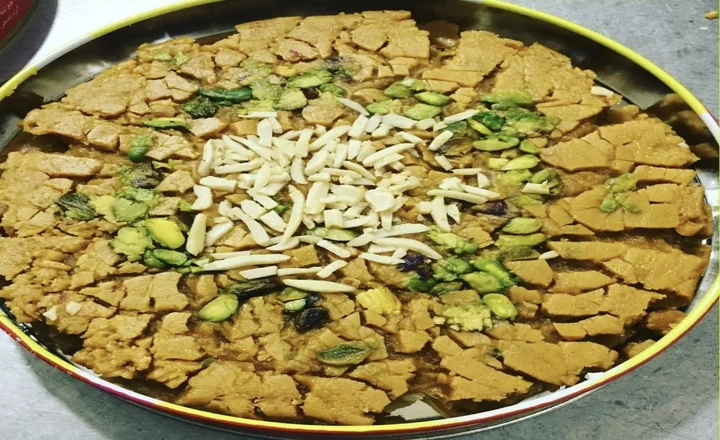
Isfahan's Artistry: Handcrafted Treasures
Isfahan's Artistry: Handcrafted Treasures, refers to the rich tradition of handmade crafts and artworks that originate from the historic city of Isfahan, Iran. Isfahan has a long and storied history as a center for artistic and artisanal excellence, and its handicrafts reflect the city's cultural heritage and dedication to craftsmanship.
These handcrafted treasures from Isfahan are not only sought after locally but are also admired worldwide for their artistic beauty and cultural significance. They serve as a testament to the city's rich heritage and its commitment to preserving and promoting traditional craftsmanship.
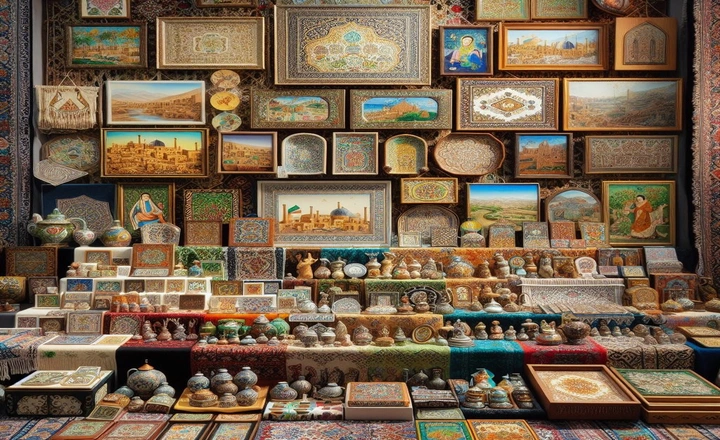
Vibrant Creations: The Art of Mina-Kari (Vitreous Enamel)
"Mina-Kari," also known as vitreous enamel, is a highly regarded and ancient decorative art form that involves the application of powdered glass to metal surfaces. This intricate and meticulous craft has a rich history and is renowned for its vibrant colors, intricate patterns, and timeless beauty. Here are some key details about Mina-Kari:
- Origins: Mina-Kari has ancient roots, with its origins traced back to the Middle East, particularly Persia (modern-day Iran). It has been practiced for centuries and has deep cultural significance in many regions.
- Technique: The process of creating Mina-Kari involves several steps. First, a metal object, often copper or silver, is shaped and polished. Then, powdered glass, known as enamel, is applied to the metal surface. The enamel is carefully fired in a kiln at high temperatures, causing it to melt and fuse with the metal. This results in a glossy and durable surface.
- Color Palette: Mina-Kari is celebrated for its vivid and eye-catching colors, which are achieved by using various types of colored enamel powders. These powders are meticulously applied and layered to create intricate designs and patterns.
- Traditional and Contemporary Designs: Mina-Kari encompasses a wide range of designs, including floral motifs, geometric patterns, and intricate calligraphy. Traditional and modern styles coexist, allowing artisans to create pieces that cater to different tastes.
- Versatility: Mina-Kari is used to adorn a variety of objects, including jewelry, vases, bowls, plates, and decorative items. It is also incorporated into architectural elements such as tiles and panels.
- Cultural Significance: Mina-Kari holds cultural and artistic significance in many regions, often reflecting the heritage and traditions of the area. It is frequently used in the creation of religious art and artifacts.
- Collectibility: Mina-Kari pieces are highly collectible and are often treasured as valuable works of art. They are sought after by collectors and art enthusiasts for their aesthetic appeal and craftsmanship.
- Preservation and Promotion: Efforts are made to preserve and promote the art of Mina-Kari through workshops, exhibitions, and cultural initiatives. Artisans continue to pass down their skills and knowledge to future generations.
Mina-Kari is a testament to the enduring beauty of traditional craftsmanship and the artistry of skilled artisans who bring vibrant colors and intricate designs to life on metal surfaces. It remains a cherished and celebrated art form, admired for its timeless elegance and cultural significance.
Khatam Kari: The Art of Persian Inlay
"Khatam Kari," often referred to as "Khatam Inlay" or "Khatam Marquetry," is an exquisite and intricate form of Persian woodworking and marquetry. This traditional craft has a long history and is celebrated for its detailed geometric patterns and the skill required to create them. Here's some information about Khatam Kari:
- Origins: Khatam Kari has its origins in Persia (modern-day Iran) and has been practiced for centuries. It is believed to have originated in the city of Shiraz, which was a center for Persian arts and culture.
- Technique: The hallmark of Khatam Kari is its intricate geometric designs. Artisans carefully cut and shape thin pieces of wood, bone, metal (such as brass), and sometimes even pearl or ivory into small triangles, rhombuses, and polygons. These pieces are then arranged into complex geometric patterns and glued onto a wooden surface.
- Materials: Khatam Kari typically incorporates a variety of materials, including different types of wood, metals, and sometimes precious or semi-precious stones like turquoise and coral. These materials are chosen for their contrasting colors and textures.
- Patterns: Khatam Kari designs often feature intricate star and polygon motifs, creating mesmerizing and symmetrical patterns. The precision and attention to detail required to create these patterns make Khatam Kari a true labor of love.
- Versatility: Khatam Kari is used to embellish a wide range of objects, including jewelry boxes, backgammon boards, trays, picture frames, and furniture. It can also be found in architectural details like doors and windows.
- Cultural Significance: Khatam Kari is deeply rooted in Persian culture and is considered an art form that reflects the beauty and complexity of Persian craftsmanship. It is often used to adorn objects of cultural and artistic significance.
- Preservation and Recognition: Efforts are made to preserve and promote the art of Khatam Kari through workshops, exhibitions, and cultural initiatives. It is recognized as an important part of Iran's cultural heritage.
Khatam Kari exemplifies the exceptional skills and creativity of Persian artisans. The meticulous craftsmanship, attention to detail, and stunning geometric patterns make Khatam Kari objects highly prized as both works of art and functional pieces. This traditional craft continues to captivate admirers worldwide, celebrating the enduring beauty of Persian culture and artistry.
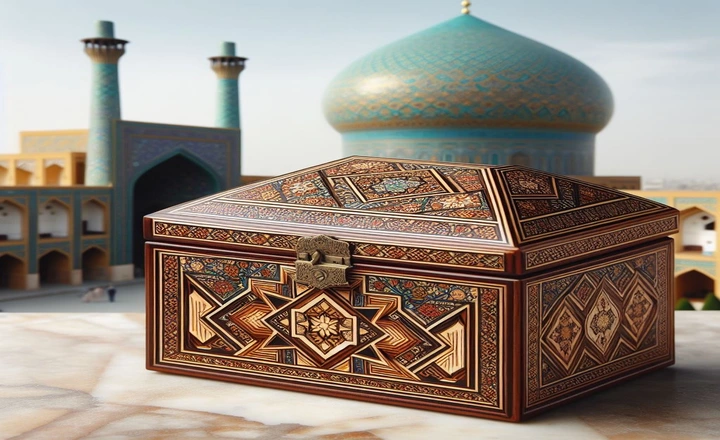
Qalam Kari: The Art of Persian Penwork
Qalam Kari in Isfahan, also known as "Ghalamzani" in Persian, is a traditional and highly regarded form of metalwork that reflects the city's rich artistic heritage and craftsmanship. Here is some information specifically about Qalam Kari in Isfahan:
- Historical Significance: Isfahan has a long history of artistic and cultural achievements, and Qalam Kari is an integral part of this heritage. The city's artisans have been practicing this craft for centuries, contributing to its cultural identity.
- Skilled Artisans: Isfahan is home to skilled Qalam Kari artisans who have mastered the techniques of engraving, embossing, and decorating various metals, including copper, brass, and silver. These artisans create intricate patterns and designs on metal surfaces.
- Decorative and Functional Objects: Qalam Kari in Isfahan is used to embellish a wide range of objects, both decorative and functional. This includes items such as trays, vases, plates, bowls, teapots, and even architectural elements like doors and windows.
- Geometric and Floral Motifs: The designs in Isfahani Qalam Kari often feature a combination of geometric patterns and floral motifs. These patterns are meticulously crafted and display a high level of precision and symmetry.
- Colorful Enamel: In some Qalam Kari pieces from Isfahan, artisans incorporate colorful enamel work to enhance the overall aesthetics. Enamel is carefully applied to specific areas, creating a striking contrast with the metal.
- Cultural and Artistic Significance: Qalam Kari in Isfahan holds cultural and artistic significance, with many pieces showcasing themes from Persian literature, poetry, and history. It is considered an art form that reflects the city's dedication to preserving traditional craftsmanship.
- Preservation and Promotion: Efforts are made to preserve and promote the art of Qalam Kari in Isfahan through workshops, exhibitions, and cultural initiatives. These endeavors aim to pass down the skills and knowledge of this craft to future generations.
Qalam Kari in Isfahan stands as a testament to the city's artistic prowess and its commitment to preserving traditional craftsmanship. The beautifully decorated metalwork produced by skilled artisans continues to captivate admirers worldwide, serving as a representation of Isfahan's rich cultural heritage.
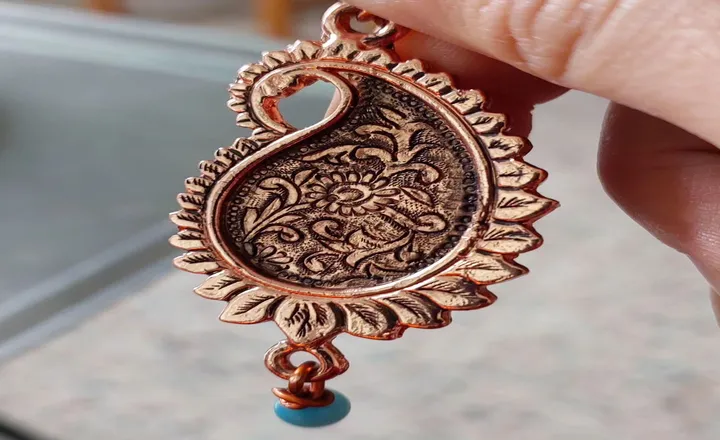
Celestial Tiles: The Masterful Craft of Kashi Kari
Kashi Kari, also known as Persian tiling, is a revered and ancient art form that has deep roots in the culture and architecture of Isfahan, Iran. Here are some key pieces of information about Kashi Kari in Isfahan:
- Historical Significance: Isfahan is celebrated for its stunning architectural wonders, many of which feature intricate tile work. Kashi Kari has played a vital role in the city's architectural heritage for centuries. The city's grand mosques, palaces, and public buildings are adorned with exquisite tiles, showcasing the artistry of Kashi Kari.
- Mosaic Masterpieces: Kashi Kari involves the creation of intricate mosaics using ceramic or faience tiles. These tiles are cut into various shapes and sizes and then carefully arranged to form mesmerizing geometric, floral, and calligraphic patterns. The tiles are often glazed and painted to achieve vibrant colors and intricate details.
- Architectural Applications: Kashi Kari is commonly used to decorate walls, domes, mihrabs (prayer niches), and entrances in Isfahan's architectural marvels. Some of the most famous examples include the stunning tiles of the Sheikh Lotfollah Mosque, Imam Mosque (Masjid-e Imam), and Ali Qapu Palace.
- Geometric Precision: Geometric patterns are a hallmark of Kashi Kari in Isfahan. The intricate interplay of geometric shapes creates mesmerizing designs that draw the eye and inspire contemplation.
- Floral and Calligraphic Motifs: In addition to geometric patterns, Kashi Kari also incorporates floral motifs and calligraphic inscriptions. These elements often convey messages of faith, spirituality, and Persian poetry.
- Cultural Significance: Kashi Kari is deeply rooted in Persian culture and is considered an essential part of Iran's artistic heritage. It reflects the aesthetic sensibilities of the region and the importance of decorative arts in Persian architecture.
- Preservation and Restoration: Efforts are made to preserve and restore Kashi Kari masterpieces in Isfahan. Skilled artisans work diligently to maintain the beauty and integrity of historic tilework.
- UNESCO Recognition: Isfahan's historic city center, which includes many Kashi Kari-adorned structures, has been designated as a UNESCO World Heritage Site, acknowledging the cultural significance of the city's architectural and decorative treasures.
Kashi Kari in Isfahan continues to captivate visitors and art enthusiasts from around the world. Its timeless beauty and intricate craftsmanship stand as a testament to the city's rich artistic heritage and its commitment to preserving the art of Persian tiling.
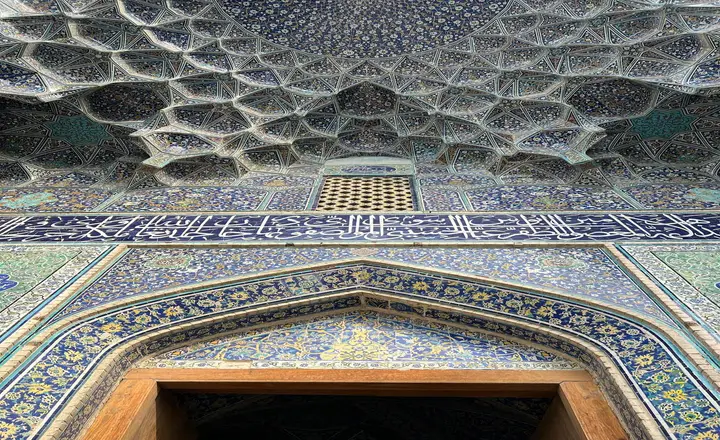
Qollab Doozi: The Artistry of Crochet and Embroidered Stitching
Qollab Doozi, also known as Golabetoon Doozi or simply Doozi, is a traditional form of embroidery and needlework that holds a special place in the textile arts of Isfahan, Iran. Here is some information about Qollab Doozi in Isfahan:
- Handcrafted Artistry: Qollab Doozi is characterized by its meticulous hand embroidery and intricate stitching. Skilled artisans create beautiful patterns and designs using various types of stitches and threads, resulting in finely detailed and elegant textiles.
- Versatile Applications: This form of needlework is applied to a wide range of textiles and fabrics, including clothing, scarves, shawls, tablecloths, and decorative items. It adds a touch of sophistication and artistry to everyday textiles.
- Decorative Motifs: Qollab Doozi often features decorative motifs inspired by Persian culture and nature. These can include intricate floral patterns, geometric designs, and representations of birds, animals, and plants. The choice of motifs may vary depending on the intended use of the textile.
- Vibrant Colors: Artisans use a palette of vibrant and richly colored threads to create eye-catching designs. The choice of colors and their arrangement is an essential aspect of the artistry, adding depth and dimension to the embroidered pieces.
- Traditional Craftsmanship: Qollab Doozi has a long history in Isfahan and is considered an integral part of the city's cultural heritage. Artisans pass down their skills and techniques through generations, preserving the tradition.
- Unique Patterns: One of the distinctive features of Qollab Doozi is the use of unique patterns and stitches. The combination of various stitches, including satin stitch, chain stitch, and buttonhole stitch, results in intricate textures and designs.
- Modern and Traditional Fusion: While Qollab Doozi maintains its traditional roots, contemporary artisans may incorporate modern elements and materials to create unique and innovative pieces that appeal to a broader audience.
- Preservation Efforts: Efforts are made to promote and preserve the art of Qollab Doozi in Isfahan. Artisans and cultural organizations host workshops, exhibitions, and events to showcase the craft and ensure its continuity.
Qollab Doozi in Isfahan exemplifies the city's dedication to preserving traditional craftsmanship and celebrating the beauty of handmade textiles. Its intricate and elegant designs continue to be cherished both locally and internationally, serving as a testament to the rich artistic heritage of Isfahan.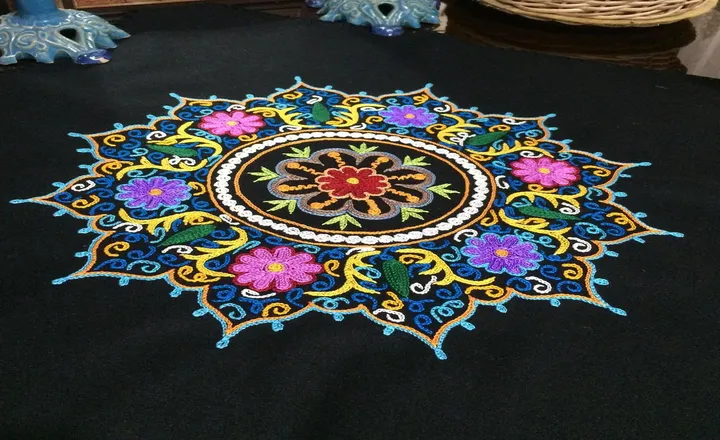
Malileh Sazi: The Art of Iranian Metal Inlay
"Malileh Sazi," also known as "Malileh" or "Metal Inlay," is a traditional Iranian art form that involves the intricate inlay of metals into other metals, creating stunning decorative designs. While not specific to Isfahan, this art form has historical significance in various regions of Iran, including Isfahan. Here is some information about Malileh Sazi:
- Artistic Inlay: Malileh Sazi involves the delicate process of inlaying fine metal wires or sheets into the surface of another metal object. The inlaid metal is often gold, silver, or brass, and it is carefully fitted into engraved or recessed areas on the base metal, creating detailed and intricate patterns.
- Geometric and Floral Motifs: Traditional Malileh Sazi designs often feature a combination of geometric and floral motifs. These patterns are meticulously crafted and may draw inspiration from Persian art, calligraphy, and nature.
- Historical Roots: Malileh Sazi has ancient origins in Iran and has been practiced for centuries. It is closely associated with Persian craftsmanship and is found on a variety of objects, including decorative plates, vases, jewelry, and architectural elements.
- Materials and Techniques: The base metals used for Malileh Sazi can vary, with copper and brass being common choices. The inlay material is typically gold, silver, or a combination of both. Artisans use specialized tools to engrave the designs and then carefully set the precious metals into the engraved areas.
- Functional and Decorative: Malileh Sazi pieces can be both functional and decorative. While they are often found in ornamental objects and artworks, they may also appear in functional items such as trays, boxes, and tea sets.
- Cultural and Artistic Significance: Malileh Sazi is celebrated for its artistic and cultural significance in Iran. It reflects the country's rich artistic heritage and craftsmanship, showcasing the skill and precision of Iranian artisans.
- Preservation and Promotion: Efforts are made to preserve and promote the art of Malileh Sazi through workshops, exhibitions, and cultural initiatives. Artisans continue to pass down their skills and knowledge to new generations.
While Malileh Sazi is not exclusive to Isfahan, it is an integral part of Iran's traditional artistry and craftsmanship. Its presence in Isfahan, along with other regions of Iran, contributes to the country's rich and diverse cultural heritage.
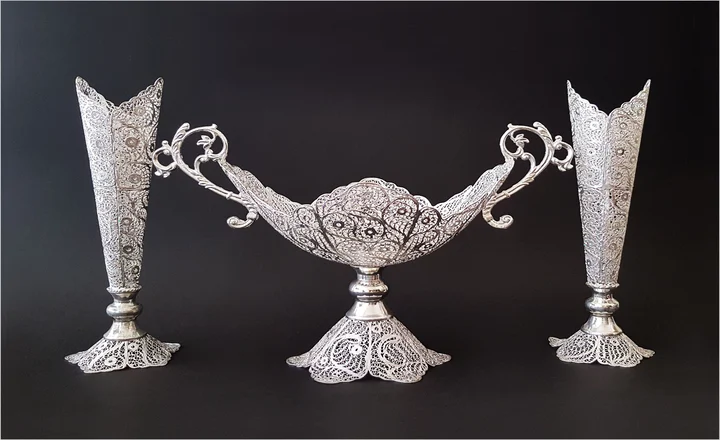
Qalam Zani: The Timeless Craft of Persian Etching
Qalam Zani, also known as Persian etching or metal engraving, is a traditional art form practiced in various regions of Iran, including Isfahan. Here is some information about Qalam Zani in Isfahan:
- Ancient Craftsmanship: Qalam Zani has deep historical roots and has been practiced in Iran for centuries. It involves the intricate process of engraving intricate designs and patterns onto metal surfaces.
- Skilled Artisans: Isfahan is home to skilled Qalam Zani artisans who have honed their craft over generations. These craftsmen possess a high level of expertise and precision in their work.
- Versatile Application: Qalam Zani is used to decorate a wide range of metal objects, including trays, plates, bowls, vases, candle holders, and religious artifacts. The engraved designs vary in complexity and can include geometric patterns, floral motifs, calligraphy, and scenes from Persian literature and history.
- Intricate Detailing: The hallmark of Qalam Zani is its attention to detail. Artisans use specialized tools, such as chisels and gravers, to create finely detailed engravings on metal surfaces. These engravings may be shallow or deep, depending on the desired effect.
- Cultural and Artistic Significance: Qalam Zani is an art form that reflects Iran's rich cultural heritage and artistic traditions. It often incorporates elements of Persian art, poetry, and history, making it a meaningful and culturally significant craft.
- Preservation Efforts: In Isfahan and other regions of Iran, efforts are made to preserve and promote the art of Qalam Zani. Artisans pass down their skills to apprentices, and cultural initiatives aim to showcase the beauty and cultural value of this traditional craft.
- Decorative and Functional: Qalam Zani pieces can serve both decorative and functional purposes. They are admired for their aesthetic appeal and are often used as ornamental pieces in homes and for special occasions.
- Exported Artistry: Qalam Zani items crafted in Isfahan are not only cherished locally but are also exported internationally. They are sought after by collectors and art enthusiasts worldwide for their craftsmanship and beauty.
Qalam Zani in Isfahan stands as a testament to the city's commitment to preserving traditional craftsmanship and celebrating the artistry of metal engraving. The intricate and finely detailed designs created by skilled artisans continue to captivate admirers, both within Iran and around the world.
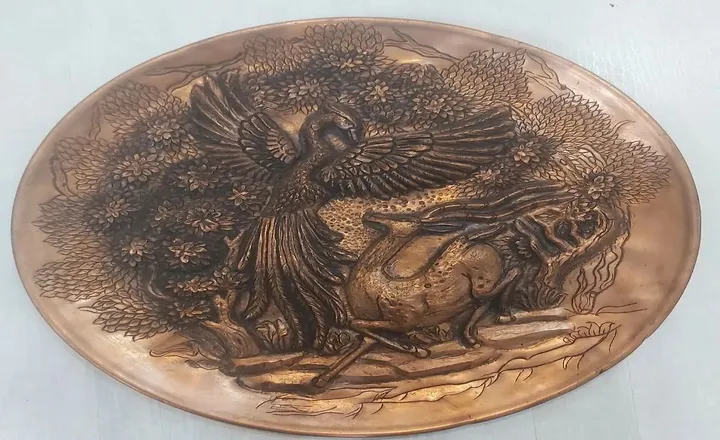
Last word
In summary, Isfahan's souvenirs and handicrafts provide a wonderful opportunity to bring home a piece of the city's rich cultural heritage. From exquisite traditional crafts to delectable edible treats, these items make for meaningful mementos for your visit. Supporting local artisans and exploring the city's unique offerings adds a special touch to your Isfahan experience. So, when deciding what to buy in Isfahan, remember that these souvenirs and handicrafts allow you to take a piece of the city's charm and culture with you wherever you go.
FAQ
What are some must-buy souvenirs and handicrafts in Isfahan?
Isfahan offers a diverse range of souvenirs and handicrafts to choose from, including Persian carpets, miniature paintings, Qalam Kari metalwork, inlaid woodwork, and traditional sweets like gaz.
Where can I purchase Isfahan souvenirs and handicrafts in the city?
You can find these unique items in various locations throughout Isfahan, including the Grand Bazaar (Bazaar-e Bozorg), local markets, specialized handicraft shops, and even some museums that have gift shops.
Are Isfahan souvenirs and handicrafts affordable, or should I be prepared to haggle?
Prices for souvenirs and handicrafts can vary, and it's common to engage in friendly haggling at markets and bazaars. While some items may be affordable, others, especially those of higher quality or with intricate craftsmanship, may have higher price tags.
Are Isfahan souvenirs and handicrafts authentic, or should I be cautious about counterfeit items?
Authenticity is crucial when shopping for souvenirs. To ensure you're buying genuine Isfahan souvenirs and handicrafts, it's advisable to shop at reputable stores, markets, and government-certified handicraft shops that offer certified and high-quality products.
Can I bring Isfahan souvenirs and handicrafts back home as gifts for friends and family?
Absolutely! Isfahan's souvenirs and handicrafts make excellent gifts. Whether you're looking for unique home decor, traditional artwork, or delectable sweets, there's something for everyone to enjoy and cherish as a special token from your trip to Isfahan.

